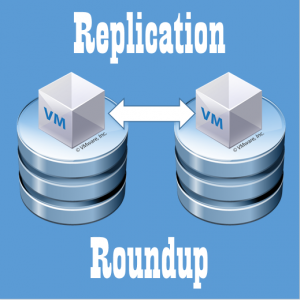

When it comes to enterprise environments, using the default configuration and let all proxies that process VMs backups, passing through a single gateway server, to write data on the Data Domain might not be the best option. This site uses Just the Docs, a documentation theme for Jekyll.ĭell EMC Data Domain Data Domain Advanced Scalability
#Veeam data domain windows
#Veeam data domain software
Depending on your backup software in use, this might be necessary before you can access the DDBoost storage unit. One more thing to note: there’s a file system setting on the DD to present read-only replicas as writable to your DDBoost application. That said, if you know the command it’ll take you next to no time to enable DDboost. It would be nice to have a button in the MTree overview to enable DDBoost access to a replica MTree without having to resort to CLI access. Finally you can see the replication status in the bottom of the screen. You can also see that it is a DD Boost Storage Unit under the Protocols section. Viewing the MTree properties you can now see that the status is RO/RD (Read Only/Replication Destination). The MTree is the name after /data/col1/, so in the above screenshot there’s two MTrees: backup (which is default and cannot be removed) and veeam. Grab your CLI and run the following command on the secondary Data Domain:.Configure the replication pair, which will create the destination MTree on the secondary system.Create the source MTree on the primary system.It turns out you will need the CLI to enable DDBoost on a replica MTree. Wait, weren’t we allowed to replicate to an empty MTree? Apparently enabling DDBoost on an MTree removes the “empty” flag… The solution Create new replication pair, select source and destination system and MTree, click next: ERROR – MTree already exists.

We did NOT use it or connect in to Veeam just yet instead we now tried setting up the replication. We created a new DDBoost Storage Unit on the secondary system. so we tried it the other way around. We removed the replication and the replica MTree, so we’re back at the start with just an active MTree on the primary system. Trying to trick the DD-OS by creating a new Storage Unit with the same name as the replica MTree will yield a “MTree already exists” error. You also can’t add the MTree to the Storage Units in the DDBoost configuration screen. There’s no GUI button on the MTree itself to enable DDBoost. mark the MTree as a DDBoost Storage Unit). Last step: enabling DDBoost on this MTree (i.e. Replication started automatically and we were happy. Our destination MTree didn’t exist so the Data Domain created it without fault. There’s a warning here: the destination MTree should either not exist (and DD-OS will create it for you) or it should be empty. Simply select the source MTree and select the destination Data Domain and MTree. Next up: replication. You can replicate MTrees as a whole on a Data Domain. So far so good: we were able to connect Veeam to this DDBoost Storage Unit and start backing up data. If you create a DDBoost Storage Unit, the Data Domain will create a new MTree in the background, which is basically a path on the Data Domain. For the record, we’re running DD-OS 5.5.2.2.Īfter the basic set-up of the system we created a DDBoost user and a DDBoost Storage Unit on the primary Data Domain.

However it turned out to be somewhat of a challenge to enable DDBoost access on the replica. Veeam will access the Data Domain using DDBoost: DDBoost brings a multitude of advantages to the table over a regular NFS export or SMB share, namely in performance and backup server resource utilization. This in turn means Veeam should be able to read from the replica, which turned out to be a bit of a configuration challenge. You’d like your backup software to be aware of the replicas on the secondary location. In this case replication will be handled by the Data Domain system itself. Backup would be replicated to the secondary system to guarantee recoverability even if the first system or data center experiences a catastrophic failure. Last week I’ve been implementing two new Data Domain systems for a new customer who’d like to use these systems as backup targets for their existing Veeam 8 environment.


 0 kommentar(er)
0 kommentar(er)
